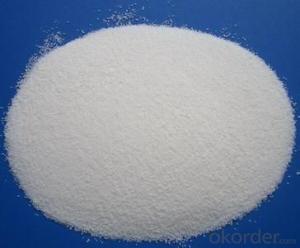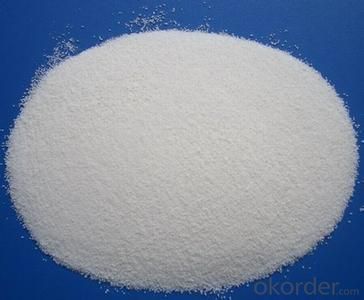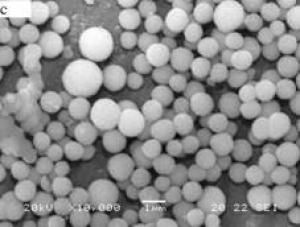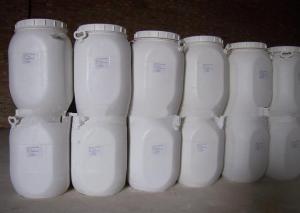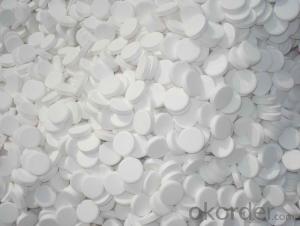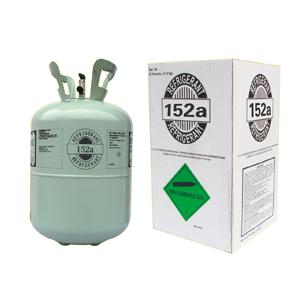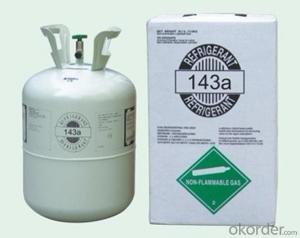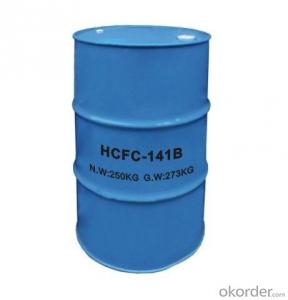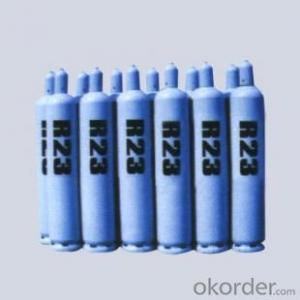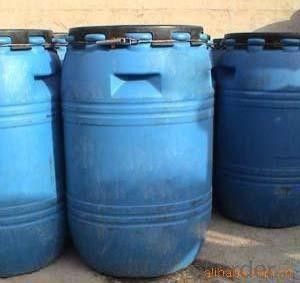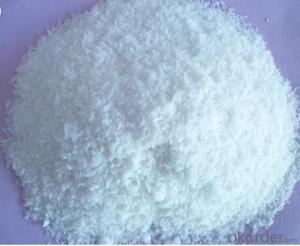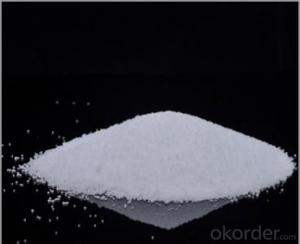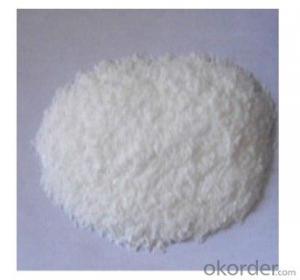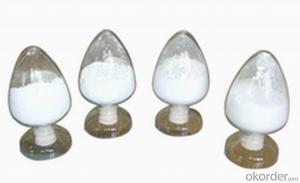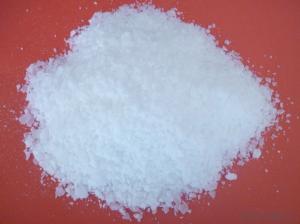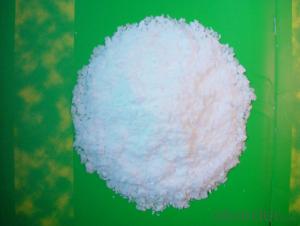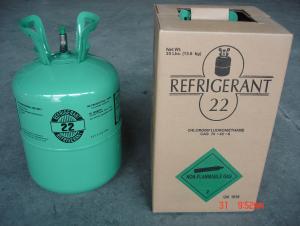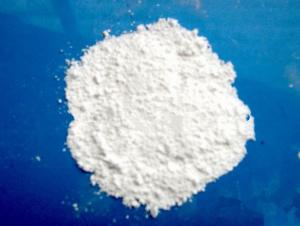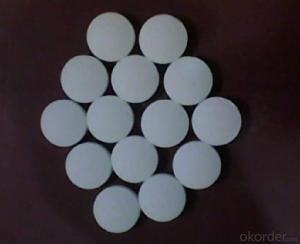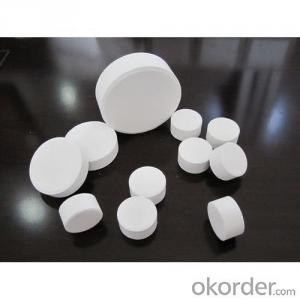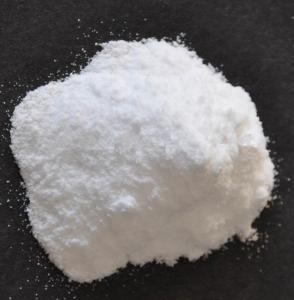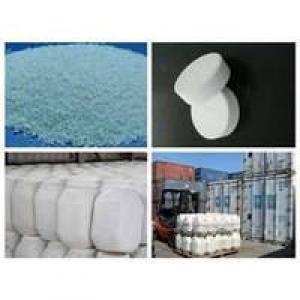Stearic Acid SA1840
- Loading Port:
- Tianjin
- Payment Terms:
- TT OR LC
- Min Order Qty:
- -
- Supply Capability:
- 8000MT/month m.t./month
OKorder Service Pledge
OKorder Financial Service
You Might Also Like
Stearic acid
Formula: C18H36O2
Structural Formula:CH3(CH2)16COOH
Product Description:
Shaped like Lump, flake; Saturated fatty acid mainly with C16 and C18, white flake solid at ambient temperature, not dissolved in water, slightly dissolved in benzene and carbon bisulfide, and easily dissolved in hot alcohol. No smell no poison. It has the general chemical properties of organic carboxylic acid.
Physicochemical Properties:
pure product is white with a shiny soft small pieces, melting point 69.6 degrees, the boiling point of 376.1 degrees. Relative density 0.9408, refractive index 1.4299, slowly volatile in the 90-100 degrees. Slightly soluble in cold water, soluble in alcohol, acetone, soluble in benzene, chloroform, ethyl ether, carbon tetrachloride, carbon disulfide, toluene and so on.
Specification:
Item | Index | |||||
Grade No. | 1842 | 1838 | 1820 | 1860 | 1870 | 1880 |
Iodine value gI2/100g ≤ | ≤5.0 | ≤5.0 | ≤5.0 | ≤6.0 | ≤7.0 | ≤8.0 |
Saponification value mgKOH/g | 206~211 | 206-213 | 214-216 | 193-220 | 193-220 | 192-218 |
Acid value mgKOH/g | 208~210 | 210~211.5 | 214-225 | 182-218 | 192-218 | 193-220 |
Chroma (Hazen) ≤ | ≤60 | ≤80 | ≤100 | 200-400 | ≤150 | 400 |
Freezing point °C | 54~57 | 54~57 | 55~57 | 54 | 52 | 52 |
Moisture % ≤ | ≤0.2 | ≤0.2 | ≤0.2 | ≤0.3 | ≤0.3 | ≤0.3 |
Inorganic acid % ≤ | 0.001 | 0.001 | 0.001 | 0.001 | 0.001 | 0.001 |
Suggest Uses:
Mainly for the production of stearic acid salts: Widely used system for cosmetics, plastic cold-resistant plasticizer, release agent, stabilizer, surfactants, rubber vulcanization accelerator, waterproof agent, polishing agent, metal soap, metal mineral flotation agent, softeners, pharmaceuticals, and other organic chemicals.
In addition, oil-soluble pigments can be used as solvents, crayons transfer slip agent, waxed paper lighting agent, stearic acid glyceride emulsifier, etc..
Packing :25/50kg in PP bag ,25MT/20GP
Product Storage:
in dry warehouse ventilation should be more than 10mm from the ground to avoid damp products in the above-mentioned conditions, from the date of delivery for one year shelf life.
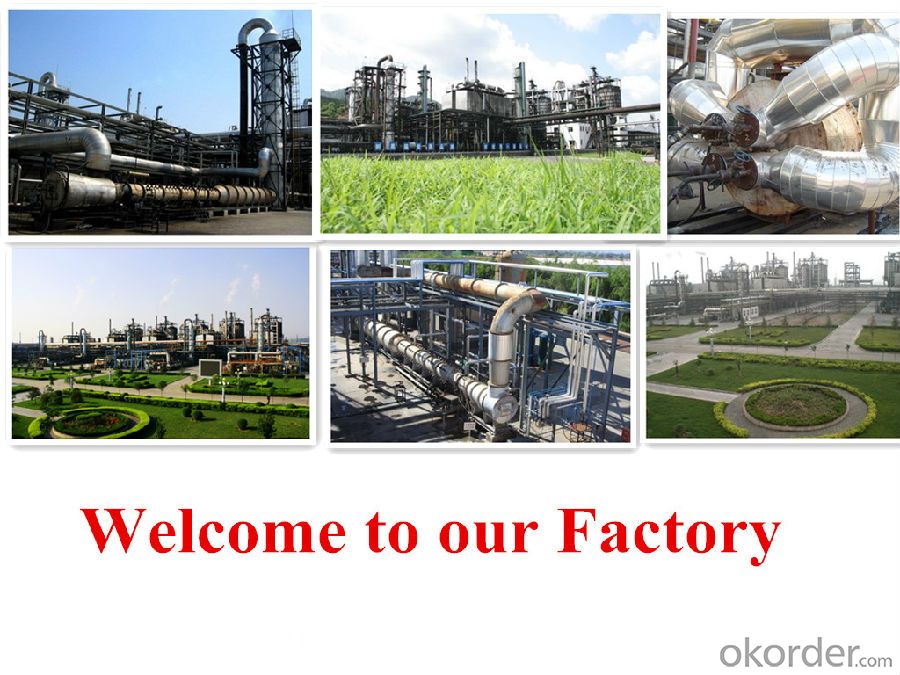

- Q: What does organic and inorganic mean?
- [Inorganic] inorganic is inorganic compounds referred to, usually refers to non-carbon compounds. A small number of carbon-containing compounds, such as carbon monoxide, carbon dioxide, carbonates, cyanides, etc. are also inorganic. Inorganic materials can be divided into oxides, acids, alkalis, salts and so on. Organic compounds Definitions Organic compounds usually refer to carbon-containing compounds, or hydrocarbons, and their derivatives, are collectively referred to as organic compounds.
- Q: Does the carboxylic acid react with the Grignard reagent?
- Reaction. Grignard reagent is an organic strong base, first and the acid reaction of carboxylic acid to produce magnesium salt, and sometimes further nucleophilic attack, control conditions will get different products, but the first acid-base reaction is unavoidable.
- Q: Sugar, fat, and so on a variety of organic matter is full of different units of the heat of the small box. (Save the heat the most efficient, the least loss of heat the most practical and most economical box).
- Organic matter carries more richer and more easily utilized by creatures
- Q: Such as the problem, and how, how to squeeze methane into liquid, or how to squeeze into the liquid gas? It is still very difficult ... there is a dangerous thing .... (this is not important) high reward
- Pentane, g, x, n, decane, to eleven to hexadecane are liquid hydrocarbons. Ethanol is not a hydrocarbon, it is aerobic. Polymeric material is a compound of relatively high molecular weight Composition of the material, there are many, such as rubber, plastic, fiber, paint
- Q: Will AsH3 (arsenic trioxide) is organic or inorganic
- So the organic matter must contain the element is the C element
- Q: What are the oxygen consumption of the oxygen-containing derivatives of the mass hydrocarbons?
- For this comparison, you can see the experimental formula of this material, a C corresponds to an oxygen, 4 H corresponds to an oxygen, the experimental consumption of oxygen up, then under the same quality conditions, the greater the oxygen consumption of this material
- Q: Derivatives of vinyl acetate
- Vinyl acetate can produce reactions that occur most of the olefins or esters. Such as the addition of bromine to form dibromide, the addition of hydrogen halide to produce vinyl haloacetate, which is the only way to produce the substance because there is no corresponding halohydrin. The addition of acetic acid under palladium catalysis can produce ethylene diacetate and CH3CH (OAc) 2. The latter can undergo a transesterification reaction with many carboxylic acids. As an alkene, vinyl acetate can also undergo a Diels-Alder reaction and a 2 + 2 ring addition
- Q: Organic chemistry studies the performance of hydrocarbons and their derivatives, either right or wrong
- Correct
- Q: Why not ah?
- Ethylene is not a derivative of hydrocarbons, ethylene Chemical formula: CH2 = CH2
- Q: Why can organic matter be unique in chemical substances? What is the nature of the C atom?
- Organic this historical term, can be choked to the 19th century, when the students that organic compounds can only be biological (life-force, vis vitalis) synthesis. This theory is based on organic matter and "inorganic" the basic difference, organic matter can not be non-vitality synthesis. But later this theory was overthrown, the German chemist Friedrich W?hler to cyanide and ammonia synthesis of urea (inorganic synthesis of organic matter). In general, organic compounds are defined as compounds with hydrogen bonds and inorganic compounds are not. Therefore, carbonic acid (H2CO3), carbon dioxide is an inorganic compound, but formic acid (also known as formic acid) (HCOOH, the first fatty acid) is an organic compound.
Send your message to us
Stearic Acid SA1840
- Loading Port:
- Tianjin
- Payment Terms:
- TT OR LC
- Min Order Qty:
- -
- Supply Capability:
- 8000MT/month m.t./month
OKorder Service Pledge
OKorder Financial Service
Similar products
Hot products
Hot Searches
Related keywords
